Types of Biofuel: Comparison of Solid, Liquid, and Gaseous Fuels
An alternative to traditional energy resources is various types of biofuels, for the manufacture of which vegetable or animal raw materials, industrial waste and the results of vital activity of organisms are used.
We offer you to understand the advantages and disadvantages of using such a fuel, find out the features of production, functional characteristics, as well as evaluate the effectiveness of using different types of biofuel. The information provided will help you navigate the selection of alternative sources of energy.
The content of the article:
What is biofuel
The most promising area in the energy sector is technology that involves the use of renewable resources, which include biofuels.

As raw materials for its production, biomass of plant / animal origin can be taken, including industrial waste or animal waste.
The processing of such substances is carried out by a thermochemical or biological method, in the latter case, fuel is obtained using various types of microorganisms.

Many countries have special programs to expand the share of biofuels in national and regional energy consumption. A number of states also have mandatory standards for the use of this energy source.
Advantages and disadvantages of biofuels
Biological types of fuel have their positive and negative sides. Interest in the use of this type of raw material is caused by its undoubted advantages.
These include:
- Budget cost. Although at the moment the prices for biofuels practically coincide with the cost of gasoline, biological substances are considered to be a more profitable type of fuel, since they produce less emissions during combustion. Biofuel is suitable for use in various conditions, while it can be adapted to engines of different designs. Another plus is the optimization of the engine, which remains clean longer due to the small amount of soot and exhaust gases.
- Mobility. Biofuel differs from other options for alternative energy sources in its mobility. Solar and wind turbines usually include heavy batteries, which is why they are most often used stationary, while biofuel can be transported from one region to another without much hassle.
- Renewable energy source. Although, according to researchers, the existing deposits of crude oil will last at least several hundred years, fossil reserves are still finite. Biofuels made from plants and animal waste are among the renewable resources that are not threatened with extinction in the foreseeable future.
- Earth atmosphere protection. A major drawback of traditional hydrocarbons is the large percentage of CO2that is released by burning. This gas creates a greenhouse effect in the atmosphere of our planet, creating conditions for global warming. When burning biological substances, the amount of carbon dioxide decreases to 65%. In addition to this, crops used in biofuel production consume carbon monoxide, reducing its share in the air.
- Economic security. Hydrocarbon reserves are distributed unevenly, so some states are forced to purchase oil or natural gas, spending large sums on the acquisition, transportation, and storage. Various types of biological fuel can be obtained in almost any country. Since for its manufacture and processing it will be necessary to create new enterprises and, accordingly, jobs, this will benefit the national economy and positively affect the well-being of people.
Improving technology and developing new methods can enhance the positive effect of biofuels. Thus, the development of technologies using plankton and algae will significantly reduce its price.
At the same time, at the present stage of the development of science and technology, biofuel production is associated with a number of difficulties and inconveniences. First of all, these are natural restrictions in growing plants.
For the growth of crops used to produce biomass, a number of factors must be taken into account, namely:
- Water use. Agricultural plants consume a lot of water, which is a limited resource, especially in arid places.
- Invasiveness. Fuel crops are often aggressive. They drown out the authentic flora, which could damage the biodiversity and ecosystem of the region.
- Fertilizers. Many plants require the addition of nutrients that can harm other crops or the general ecosystem.
- Climate. Certain climatic zones (for example, desert or tundra) are not suitable for growing biofuel crops.
Active cultivation of agricultural plants is also associated with the depletion of agricultural resources. Non-observance of the rules of agricultural technology can lead to a decrease in the content of useful soil components and, as a result, to their depletion, which will aggravate the food problem.
Ecosystem disruption occurs. For the production of biomass usually requires the expansion of the territories involved in agriculture.
Often, for this purpose, the territory is cleansed, which leads to the destruction of the microecosystem (for example, forests), the death of plants and animals.

There are problems with growing monocultures. To produce a larger biomass crop, producers often sow the land with a particular plant. This practice does not reflect well on the condition of agricultural land, since monoculture leads to a change in the environment.
On the fields occupied by one species of plants, special varieties of pests are usually parasitic. An attempt to combat them with insecticides and pesticides only leads to the development of resistance to these drugs.
To avoid the problems described above, scientists advise not to neglect the biodiversity of crops, combining several plants in the fields, and also use local varieties of flora.
Generations of alternative fuels
A wide range of plant materials used for biomass is usually divided into several generations.
First generation. This category includes crops that contain a high percentage of starch, sugars, fats. These are such popular plants as corn, sugar beets, canola, soy.
Since the cultivation of these crops harms the climate, and their removal from the market affects the pricing of products, scientists are trying to replace them with other types of biomass.

Second generation. The biomass group includes wood, grass, agricultural waste (shell, husk). Obtaining biofuels from such raw materials is expensive, however, it allows solving the issue of recycling non-food residues with the simultaneous production of combustible materials.
A feature of the cultures included in this variety is the presence of lignin and cellulose in them. Thanks to them, biomass can be burned and gasified, as well as subjected to pyrolysis, receiving liquid fuel.
The main disadvantage of second-generation biomass is considered to be insufficient returns per unit area, which is why significant land resources have to be allocated for such crops.
Third generation. The raw materials for the production of biofuels are algae, which are grown on an industrial scale, for example, in open waters.
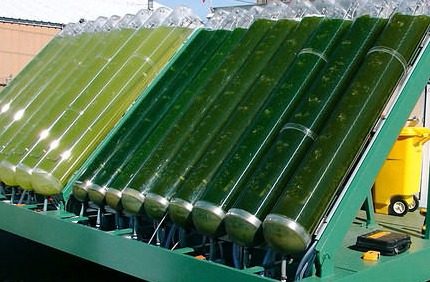
This practice has great prospects, however, at present, such technologies are only being developed. Scientists are also conducting research to create techniques to produce fourth and even fifth generation biofuels.
Three varieties of biofuels
Depending on the state of aggregation of the substance, there are three main types of biofuel:
- Solid: firewood, peat, animal waste and agricultural production.
- Liquid: biodiesel, dimethyl ether, bioethanol, biobutanol.
- Gaseous: biogas, methane, biohydrogen.
Each type of substance has its own specifics, which will be discussed below.
Type # 1: Solid
Among the most popular solid varieties of biofuel are wood, peat, animal waste.
Wood (firewood, wood chips, sawdust)
The ancient type of biofuel is firewood that is well known to everyone and has long been used for heating homes and cooking. Until now, they are actively used in different countries to produce heat / electricity, in particular, a large Austrian thermal power station, with a capacity of 66 megawatts, operates on wood.
At the same time, such raw materials have disadvantages. The energy value of firewood is relatively small: when burned, part of the substance settles in the form of soot, which is why fireplaces and stoves must be regularly cleaned. In addition, a certain amount of time is required to replenish timber stocks - new trees will grow only after 15-20 years.
An excellent alternative to ordinary wood is pellets (pellets), for the production of which substandard wood is used: bark, wood chips, pressed sawdust, boughs.
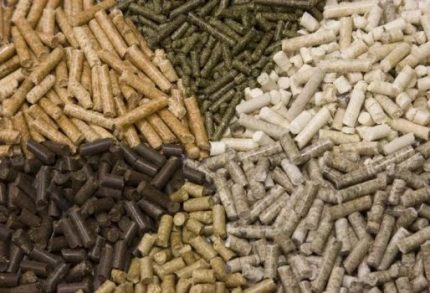
For the production of fuel pellets, the raw materials are crushed into dust, which is then dried and pressed at high temperature. Due to the lignin contained in the wood, an adhesive mass is formed, from which small cylinders 5-70 mm long and 6-10 mm in diameter are formed.

You can set up pellet production yourself by making briquette press.
Among the popular types of biofuels is wood chips, which often serves as a source of energy at European thermal power plants. The production of this raw material is carried out on logging or on special production lines equipped with shredder machines.
Swamp and forest fuel peat
This is a common type of biofuel that has been used for domestic and industrial purposes for centuries. Peat is a layer of moss that is not completely decomposed in a swamp, which is mined in many countries of the world: Russia, Belarus, Canada, Sweden, Indonesia, and others.
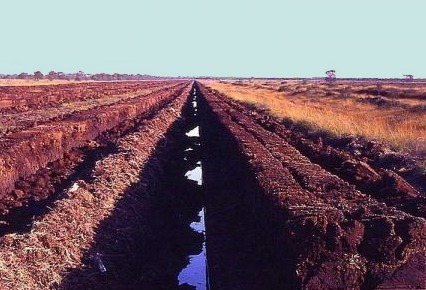
For the convenience of the production process, biomass is usually processed at the place of production. The process consists in cleaning (sieving) the raw materials from extraneous shutdowns, followed by drying and molding in the form of briquettes or granules.
Fuel from agricultural waste
In agricultural production, as a rule, a large number of various plant wastes accumulate: the outer shells of plants, nutshells, straw.
Such raw materials can also be pressed and granulated to obtain fuel pellets, the characteristics of which are practically the same as pellets made from wood biomass.
Animal biofuel
Along with firewood in ancient times, people began to use fuel of animal origin, namely dung - dried manure of domestic animals. Modern technologies for drying and processing such raw materials make it possible to obtain solid varieties of biofuels completely devoid of unpleasant odors.
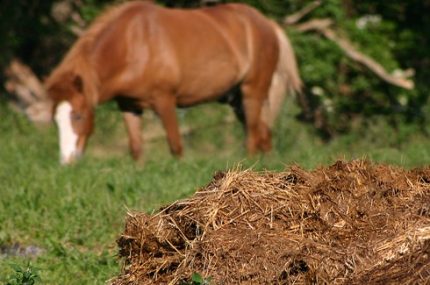
Since livestock waste is currently being accumulated on an industrial scale, the manufacture of fuel from them simultaneously solves the issue of their disposal.
Type # 2: Liquid
Liquid biofuels, which are safe and environmentally friendly, are mostly used as a substitute for gasoline and other similar products. Among the most common options are bioethanol, biomethanol, biobutanol, biodiesel, dimethyl ether.
Crop bioethanol
This is a common liquid biofuel that is used to fuel cars.Although a pure substance is not used as a fuel, its addition to gasoline improves the operation of the engine, increases its power, controls the heating of the motor, and reduces exhaust emissions.

Bioethanol was also appreciated by fans of fireplaces. This substance has good heat dissipation; moreover, it does not produce soot or smoke when it is burned, and the amount of carbon dioxide emitted is minimized.
Thanks to these features, fuel can even be used for burning a hearth in apartment buildings. Read more about biofuels for fireplaces in this article.
Bioethanol is produced from first-generation raw materials containing starch or sugar. Cereals, corn, sugarcane, beets are processed using the technology of alcoholic fermentation.
Biobutanol for refueling cars
Biobutanol is a biologically obtained analog of butanol. A colorless liquid with a characteristic odor is widely used as a chemical raw material in industry, and can also be used as a transport fuel.
The energy intensity of butanol is close to gasoline, which allows you to partially replace the latter in fuel cells. Unlike bioethanol, biobutanol can be used independently, without adding traditional types of fuel.
The most diverse plants serve as raw materials for the production of this bio-substance: beets, cassava, wheat, corn.
Dimethyl ether (C2H6O)
It is also an environmentally friendly fuel. When it is burned, there are no sulfur compounds in the exhaust gases, and the content of nitrogen compounds is 90% lower than when gasoline is burned.
Dimethyl ether can be used without special filters, but cardinal changes have to be made to the design of the car (power system, engine ignition).

Without any alterations, you can use combined fuel containing 30% dimethyl ether in machines that are equipped with LPG engines.
Liquid fuels can be produced from various raw materials: natural gas, coal dust, biomass, and primarily from the remnants of pulp and paper production, transforming into a liquid at low pressure.
Unicellular algae biomethanol
Such a substance is an analogue of ordinary methanol, which is widely used for the production of a number of chemical compounds (acetic acid, formaldehyde), and is also used as an antifreeze and solvent.
For the first time, the question of the production of this type of biofuel was raised in the 1980s, when a group of scientists proposed to obtain a liquid substance by biochemical transformation of marine phytoplankton, the cultivation of which will be carried out in special reservoirs.
Biomethanol has several potential advantages:
- high energy efficiency - 14 upon receipt of methane; 7 upon the production of methanol;
- excellent phytoplankton productivity - up to 100 tons per hectare per year;
- undemanding unicellular organismsfor the cultivation of which fresh water is not needed, fertile soil;
- conservation of agricultural resourcesbecause phytoplankton is grown in ponds or sea bays.
Although the industrial manufacture of biomethanol has not yet been established, persistent research and development of technologies for the development of the production of this type of alternative fuel are currently underway.
Biodiesel as an alternative to transport fuel
This is a liquid motor biofuel consisting of a mixture of fatty acid esters.The substance is safe for humans and animals, almost completely decomposes in the earth in 28 days, and also has a relatively high (<100) ignition temperature.
Biodiesel reduces the percentage of emissions of harmful gases, and also extends the life of the engine, since it includes lubricating components.
Fuel is used to refuel auto engines both independently and in combination with conventional fuel. Only a short shelf life of the biological substance should be taken into account: after three months, the decay of the biological substance begins with a complete loss of properties.
For biodiesel in the EU, a special standard EN14214 has been adopted. In some countries, the EN590 standard is also valid, allowing the addition of 5% biodiesel to other fuels.
Type # 3: Gaseous
The main varieties of gaseous biofuel include biogas and biohydrogen.
Biogas as a substitute for natural gas
Biogas is an almost complete analogue of natural gas: it contains 13-50% CO2, 49-87% methane, as well as impurities H2 and H2S. If this substance is cleaned of carbon dioxide, you can get biomethane.
Gaseous biofuels are made from biomass by hydrogen or methane fermentation. The latter is caused by three types of microorganisms: first, the raw material is exposed to hydrolytic bacteria, which are then replaced by acid-forming and methane-forming microbes.
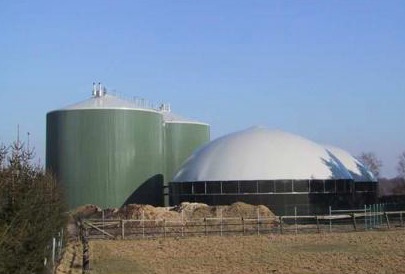
A variety of materials can be used as raw materials: silage, manure, algae, wastewater, litter, fecal residues, household waste. The starting material is brought into a homogeneous state, after which it is placed in a reactor using a loader.
It maintains a comfortable temperature of + 35-38 ° C, which is necessary for the implementation of the methane fermentation process.
The raw materials are constantly mixed, while the resulting gaseous product is discharged into the gas holder (storage unit), from where it enters the electric generator.
Read more about the production of biogas from manure and the arrangement of a biogas plant in the articles:
- How to make biofuel with your own hands from manure at home
- Do-it-yourself biogas plant for a private house: recommendations for the device and an example of home improvement
Chemical Biohydrogen
A type of gaseous biofuel, which is an analogue of ordinary hydrogen, is obtained from biomass using biochemical or thermochemical methods.
In the thermochemical method, the prepared raw materials (for example, wood waste) are heated to a temperature of 500-800 ° C without oxygen, while gases H2, CO, CH4.

In the biochemical method, the raw material is maintained in comfortable conditions at normal pressure and temperature at about 30 ° C.
Enterobacter cloacae, Rodobacter speriodes special microorganisms are introduced into the biomass, which decompose the initial product, releasing hydrogen. Enzymes are allowed to accelerate production using polysaccharides.
Conclusions and useful video on the topic
In the video below, you can see the manufacturing process of a popular type of biofuel - wood briquettes:
Types of biofuel differ not only in the state of aggregation, but also in characteristics. When choosing such material, it is necessary to take into account their planned use, effectiveness, functional properties and cost.
Have experience using alternative fuels? Or want to ask questions about biofuels? Please comment on the publication and participate in the discussions.The feedback block is located below.

 Biofuel for the fireplace: types of biofuel, its properties + how to choose and how to do it yourself
Biofuel for the fireplace: types of biofuel, its properties + how to choose and how to do it yourself  How to choose fuel for a biofireplace: a comparative overview of the types of fuel + analysis of popular brands
How to choose fuel for a biofireplace: a comparative overview of the types of fuel + analysis of popular brands  Fireplaces on biofuel: device, types and principle of action of bio-fireplaces
Fireplaces on biofuel: device, types and principle of action of bio-fireplaces 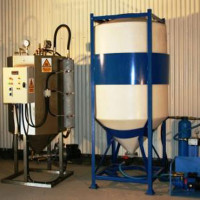 How to make biofuel with your own hands from manure at home
How to make biofuel with your own hands from manure at home 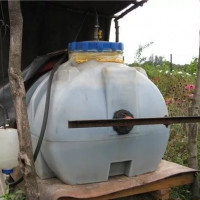 Biogas plant for a private house: recommendations for arranging homemade
Biogas plant for a private house: recommendations for arranging homemade 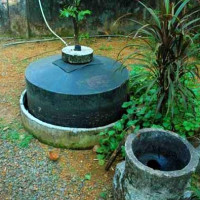 How to get biogas from manure: an overview of the basic principles and design of a production plant
How to get biogas from manure: an overview of the basic principles and design of a production plant  How much does it cost to connect gas to a private house: the price of organizing gas supply
How much does it cost to connect gas to a private house: the price of organizing gas supply  The best washing machines with dryer: model rating and customer tips
The best washing machines with dryer: model rating and customer tips  What is the color temperature of light and the nuances of choosing the temperature of the lamps to suit your needs
What is the color temperature of light and the nuances of choosing the temperature of the lamps to suit your needs  Replacement of a geyser in an apartment: replacement paperwork + basic norms and requirements
Replacement of a geyser in an apartment: replacement paperwork + basic norms and requirements
I like that biofuel for which waste from the woodworking and other industries is processed - sawdust there, substandard wood. This is a good approach to saving the planet’s resources. Algae is also an option, they especially do not need anything, but grow quickly.
But cultivation in the fields seems anti-environmental - it takes a lot of fresh water, and there is little useful product.
I can’t understand: why in Russia bioethanol is still not being introduced into the wide sale, this is a purely ecological type of fuel, and, without much difficulty, raw materials can be found for it. Wood briquettes are also a good alternative. Who can clearly answer: our Duma intentionally does not miss the law on eco-fuel or the lobby of the Gazprom specialists is involved, I suspect ...
Hello. We produce braces in good volumes, who said no. With regard to scale, the growth rate of bioenergy is increasing and is planning a volume increase, especially since it is a renewable resource, but, unfortunately, do not expect it to be beneficial to anyone, most likely, the price of such fuel will be several times higher, given features of its immediate use.
In the meantime, at most they are trying to implement this on an agricultural stand-alone form. However, according to the statistics of one manufacturer of bioenergy plants, 10 thousand farms became interested in its product, only 3 farms use it. Why, because the economic payback of equipment is unjustified.
Gazprom’s lobby, most likely, has nothing to do with it. Which countries are developing this bioethanol? 90% of world production is Brazil with their sugarcane and the United States with corn. What will we make of it?
Alex, we have a huge scale of logging. Even the fact that the waste will not rot in the forest, on the plots, and that will be beneficial. And wood is processed into alcohol and biogas no worse than corn.